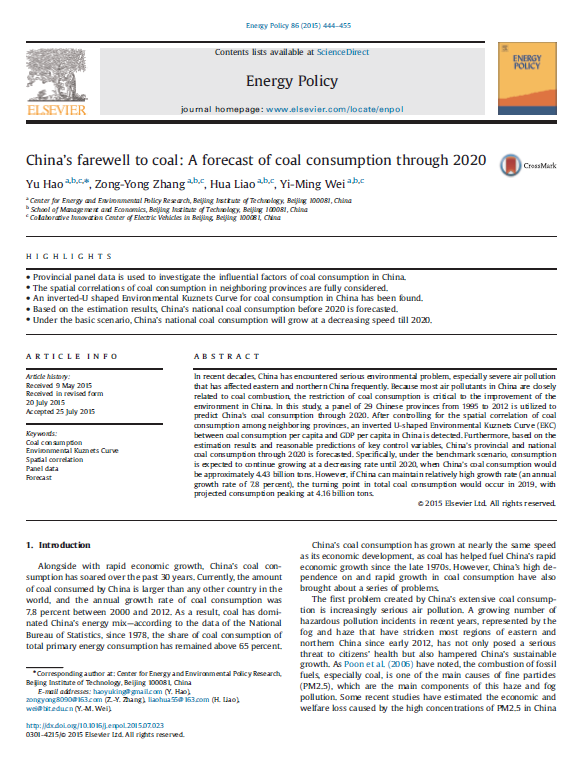
Recently, teachers (Yu Hao, Hua Liao and Yi-Ming Wei) and a postgraduate student (Zong-Yong Zhang) from CEEP-BIT have published the paper entitled “China’s Farewell to Coal: A Forecast of Coal demand through 2020” together in Energy Policy, the famous international journal in the field of energy policy.
For a long time the development of China’s economy has relied heavily on the consumption of fossil fuels, especially coal. Severe environmental issues, especially the problems caused by haze, mainly influence the rapid development of coal use. In order to improve the environmental quality, Chinese government focuses on the further decrease of fossil fuels and commits that China will increase the proportion of non-fossil fuels use to 20% by 2030. Therefore, what is the path regarding changes of coal consumption like in the future? When does the turning point of coal use occur? Could China’s overdependence on coal be broken after China’s economy steps into “new normal”?
As for the answers to these significant issues, this paper forecasts the amount of China’s coal consumption through 2020 on the base of examining the influencing factors of China’s coal use. According to the study, a panel of 29 Chinese provinces from 1995 to 2012 is utilized to predict China’s coal consumption through 2020. After controlling for the spatial correlation of coal consumption among neighboring provinces, an inverted U-shaped Environmental Kuznets Curve (EKC) between coal consumption per capita and GDP per capita in China is detected. Furthermore, based on the estimation results and reasonable predictions of key control variables, China’s provincial and national coal consumption through 2020 is forecasted. Specifically, under the benchmark scenario, consumption is expected to continue growing at a decreasing rate until 2020, when China’s coal consumption would be approximately 4.43 billion tons. However, if China can maintain relatively high growth rate (an annual growth rate of 7.8 percent), the turning point in total coal consumption would occur in 2019, with projected consumption peaking at 4.16 billion tons.
The paper is available at http://www.sciencedirect.com/science/article/pii/S0301421515300331.
